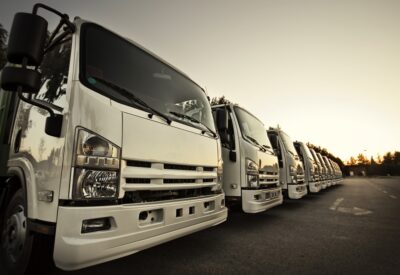
A vehicle’s size and weight matter in an auto accident. Regardless of whether you drive a big or small car, it is important to do everything you can to avoid accidents. Because if you make a mistake behind the wheel, you can cause an accident that injures or kills other motorists or pedestrians.
At John Foy & Associates, our Atlanta car accident lawyers have plenty of experience with auto accident cases. For more information, reach out to our team. We can connect you with a car accident lawyer that can help you win or settle your case.
Questions Remain About Whether Big or Small Cars Are Safer
If you plan to buy a car, it is paramount to consider the vehicle’s size and weight carefully. There are pros and cons in terms of the safety of big and small automobiles. The Insurance Institute for Highway Safety (IIHS) notes crash protection and public safety are often impacted by a vehicle’s size and weight.
A big, heavy car offers superior crash protection over a small, light one. It has a long front end that is better equipped to absorb the impact of a frontal crash than the front end of a small, light car. Also, a heavy car may continue to move forward in a crash, which means the people inside the vehicle are less susceptible to the crash’s force.
Meanwhile, a large, heavy car may cause more damage in a pedestrian accident than a small, light one. However, IIHS points out that automakers have taken steps to improve the safety of SUVs and pickup trucks. For example, automakers have lowered energy-absorbing structures on these vehicles, which may help reduce the risk of serious harm in pedestrian accidents.
Get the strong arm
What to Expect if a Big Car and a Small Car Get into an Accident
There is a direct correlation between the size and weight of a car and the injuries that people can suffer in an auto accident. If a big, heavy car and a small, light one are involved in an accident, the larger vehicle pushes its smaller counterpart backward. When this happens, more force is put on the smaller car, and the people in this vehicle are more likely to suffer injuries than those in the larger one.
The distance from the front of the vehicle can have far-flung effects in a car crash as well. In a frontal crash, a car’s front end will get pushed in, which puts anyone inside the vehicle in danger. Therefore, the more distance between the front of the car to the cabin, the more protection people in the vehicle have in frontal crashes.
No matter what type of car you drive, you deserve compensation if you are injured in an auto accident that occurs through no fault of your own. Following a car accident in Georgia, contact the team at John Foy & Associates. We can review your case and help you request fair compensation from anyone that caused your auto accident.
How Commercial Vehicles Are Classified by Size and Weight
Commercial vehicles are placed into different classes based on their size and weight. Here are the classes, along with the vehicles included in each one:
- Class 1: Minivans, cargo vans, SUVs, and pickup trucks that weigh 6,000 lbs. or less
- Class 2: Minivans, cargo vans, full-size pickup trucks, and step vans that weigh between 6,001 and 10,000 lbs.
- Class 3: Walk-in vehicles, box trucks, city delivery trucks, and heavy-duty pickup trucks that weigh between 10,001 and 14,000 lbs.
- Class 4: Large walk-in vehicles, box trucks, and city delivery trucks that weigh between 14,001 and 16,000 lbs.
- Class 5: Bucket trucks, large walk-in trucks, and city delivery trucks that weigh between 16,001 and 19,500 lbs.
- Class 6: Beverage trucks, single-axle trucks, school buses, and rack trucks that weigh between 19,501 and 26,000 lbs.
- Class 7: Refuse trucks, furniture trucks, city transit buses, and rack trucks that weigh between 26,0001 and 33,000 lbs.
- Class 8: Cement trucks, truck tractors, dump trucks, and sleeper cabs that weigh 33,001 lbs. or more
Although many commercial vehicle drivers travel cautiously, mistakes still happen. If a commercial truck driver is negligent, they can cause an accident. Depending on their vehicle’s size and weight, the accident can result in severe injuries, fatalities, and property damage.
If you are involved in an accident with a commercial vehicle, call 911. You can report the accident to the police and get medical help. It is also in your best interests to consult with a car accident lawyer to help you seek compensation from the commercial vehicle driver, their employer, or both.
Other Factors that Can Impact the Safety of Big and Small Cars
Size and weight are key factors that can affect the safety of big and small cars. Other factors can impact the safety of drivers and passengers in an auto accident as well. These factors include:
- Car’s Age: Older automobiles tend to be less safe than new ones, and it is a car owner’s responsibility to ensure that they check for recalls and perform regular maintenance to keep their vehicle running at peak levels.
- Car’s Safety Features: Airbags, automatic emergency braking, and other safety features help protect drivers and passengers against injuries in crashes.
- Seat Belt Use: It is illegal not to wear a seat belt, and drivers and passengers must do so to minimize their risk of harm.
- Car’s Speed: A driver that is traveling above the posted speed limit can cause significant harm in an accident.
- The angle of Vehicles Involved in a Crash: The angle at which one car strikes another can impact the severity of injuries to those involved in the crash.
If you are considering a big or small car, take a look at the vehicle’s safety ratings. IIHS publishes safety ratings and others for automobiles. These ratings give you insights into a car’s crashworthiness (how well a vehicle protects a driver and passenger in a crash) and crash avoidance and mitigation (the technology it uses to stop a crash or reduce its severity).
Get Help with an Auto Accident Lawsuit in Georgia
As the Strong Arm of the law, John Foy & Associates is here to help people with auto accident claims in Georgia. To request a free consultation, get in touch with us today.
(404) 400-4000 or complete a Free Case Evaluation form





